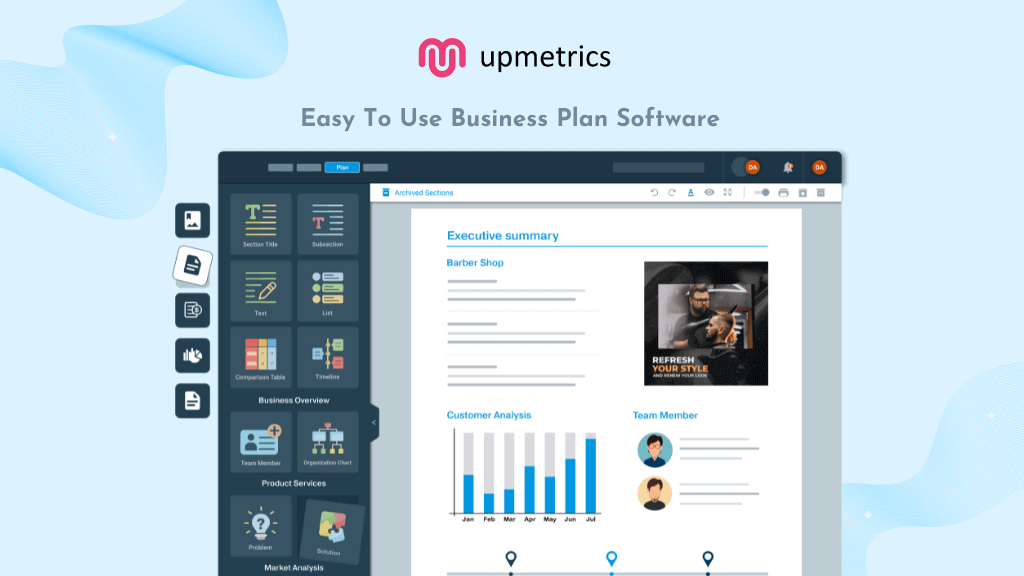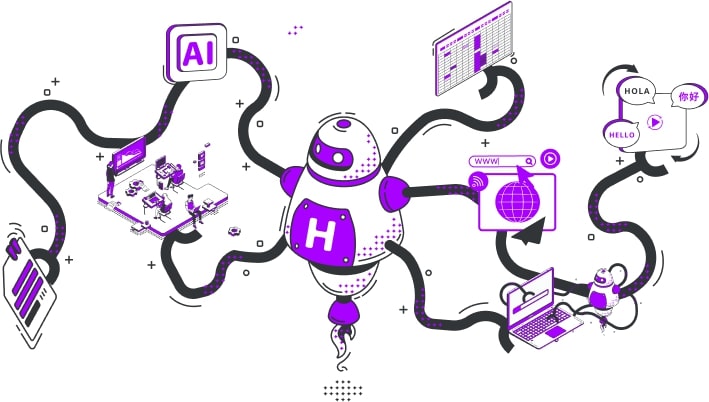- The Solopreneur
- Posts
- 🦁 8 Zones of Reinvention
🦁 8 Zones of Reinvention
The Solopreneur | April 23, 2024

Learn AI in 5 Minutes a Day
AI Tool Report is one of the fastest-growing and most respected newsletters in the world, with over 550,000 readers from companies like OpenAI, Nvidia, Meta, Microsoft, and more.
Our research team spends hundreds of hours a week summarizing the latest news, and finding you the best opportunities to save time and earn more using AI.
☕️ Welcome to The Solopreneur!
Stay on top of Solopreneur trends, AI tools, AI-driven creativity, business opportunities for solopreneurs, and entrepreneurship paths for working professionals.
Today’s top reads:
Principles of Building Value
Why is audience building important for solopreneurs?
Solopreneur Statistics for 2024
AI-Drive Tools Solopreneurs Can Build
8 Zones of Reinvention for Entrepreneurs

Here are eight key focus zones where entrepreneurs might channel their energies for transformation and innovation. These zones cover both personal development and business operations:
Personal Growth: Entrepreneurs are encouraged to move beyond fear and complacency, cultivate inspiration and creativity, embrace flexibility, and find satisfaction in their endeavors.
Human-centered Design: This involves creating solutions that are not frustrating, inconvenient, or opaque, but are instead intuitive, engaging, and user-friendly.
Relevance: This area is about ensuring that products, services, and practices remain current, necessary, and connected to the needs at hand rather than becoming obsolete or antiquated.
Accessibility: The focus here is on making sure that services and products are accessible, inclusive, user-friendly, modern, and not overly complex.
Functionality: The emphasis is on ensuring that everything operates smoothly, without faults or errors, is reliable, robust, efficient, and easy to manage.
Efficiency: This involves optimizing processes and systems to be less laborious and time-consuming, using resources wisely, and achieving effective outcomes without unnecessary difficulty.
Sustainability: It's important to aim for solutions that are accessible, inclusive, suitable, sustainable, modern, and straightforward.
Social Impact: Entrepreneurs are called upon to consider the societal implications of their work, striving to be fair, ethical, non-discriminatory, contemporary in terms of values, equitable, and inclusive.
These areas suggest a holistic approach to entrepreneurship that balances personal development, operational excellence, and a positive societal footprint.
Tools
Business Opportunities
Based on various studies and reports, here are the top 3 workload and wellbeing-related problems IT professionals face today that entrepreneurs can create solutions around:
1. Burnout and Overwork
IT professionals often work long hours, leading to physical and mental exhaustion. Solopreneurs can offer flexible, scalable solutions to help manage workload and reduce burnout. For example:
* Virtual assistance or task delegation services
* Time management and productivity coaching
* Automation tools for repetitive tasks
2. Technical Debt and Legacy System Maintenance
IT professionals often struggle with maintaining outdated systems and technical debt. Solopreneurs can provide expertise and services to help modernize and optimize systems, reducing the burden on IT teams. For example:
* System migration and integration services
* Technical debt assessment and remediation
* Legacy system maintenance and support
3. Cybersecurity and Data Privacy Concerns
IT professionals face increasing pressure to ensure data security and privacy. Solopreneurs can offer specialized services to help address these concerns, such as:
* Cybersecurity audits and penetration testing
* Data privacy consulting and compliance services
* Incident response and breach management support
Source: SideHustleScience
Business Tenure: About 41.6% of solopreneurs have been operating their businesses for less than a year.
Prevalence in U.S. Small Businesses: Solopreneurs constitute 80% of the 24 million small businesses in the U.S.
Growth in Self-Employment: There was a 9.6% increase in self-employed individuals in the U.S. in 2020, totaling 15.3 million.
Work-related Challenges: Approximately 13.13% of solopreneurs report feelings of loneliness and isolation.
Demographics: The gender split among self-employed individuals is 56% male and 44% female.
Age Distribution: 14.8% of solopreneurs are aged between 18 and 24.
Economic Contribution: Solopreneurs contribute over $1.3 trillion to the U.S. economy.
Entrepreneurial Education: 54% of small business owners have formal business education.
Technology Dependence: 69.4% rely heavily on technology for business operations.
Expansion Plans: 65.1% of solopreneurs aim to grow their business by expanding their team.
Q & A
Question: Why is audience building important for solopreneurs?
Answer: Building an audience is essential for solopreneurs because it lays the foundation for growth and sustainability in their businesses. Here’s why audience building is so crucial:
1. Trust and Credibility
An audience offers solopreneurs the platform to establish credibility and build trust by consistently providing value. This relationship fosters loyalty and increases the likelihood of repeat business.
2. Valuable Insights
Interacting with an audience helps solopreneurs gain insights into customer preferences and behaviors, enabling them to tailor their products or services more effectively. This feedback loop is crucial for refining offerings and enhancing customer satisfaction.
3. Diverse Revenue Streams
A large and engaged audience opens up multiple revenue channels beyond direct sales, such as partnerships, sponsored content, and affiliate marketing. Each audience member represents potential revenue, increasing as the audience grows.
4. Cost Efficiency
Audience building through organic methods like content marketing and social media is cost-effective, especially compared to paid advertising. It offers a higher return on investment as the audience base expands.
5. Business Resilience
A loyal audience can provide stability and support during economic downturns or industry changes, helping solopreneurs weather storms that might otherwise jeopardize their business.
6. Scalability
An expanding audience can lead to new market opportunities and geographic expansion, allowing solopreneurs to scale their operations and reach more customers.
7. Networking Opportunities
A diverse audience can also include potential collaborators and business partners, opening up networking opportunities that can lead to new ventures and growth.
8. Personal Fulfillment
Engaging with an audience allows solopreneurs to share their passion and receive direct feedback, contributing to both personal satisfaction and professional development.
In essence, audience building is not just about marketing; it's a strategic approach that supports nearly every aspect of a solopreneur's business, from increasing sales and gathering insights to enhancing stability and personal fulfillment. It's a dynamic tool that drives both immediate benefits and long-term success.
AI-Drive Tools Solopreneurs Can Build
Solopreneurs can build a variety of AI-driven products to enhance their businesses or create new revenue streams. Here are some ideas and steps to get started:
1. Social Media Management Tools
Develop a social media management tool using APIs from Facebook, Twitter, Instagram, or LinkedIn.
Use AI to schedule posts, analyze engagement, and provide content recommendations.
2. E-commerce Product Recommendation Engines
Build a product recommendation engine using machine learning algorithms and e-commerce platforms like Shopify or WooCommerce.
Analyze customer behavior, purchase history, and product attributes to suggest relevant products.
3. AI-powered Surveys and Feedback Tools
Create surveys and feedback tools using platforms like SurveyMonkey, Google Forms, or Typeform.
Use AI to analyze responses, identify trends, and provide actionable insights.
4. SEO Optimization Tools
Develop an SEO optimization tool using NLP and machine learning algorithms.
Analyze website content, keywords, and backlinks to provide optimization recommendations.
5. Customer Segmentation and Profiling
Use machine learning to segment customers based on behavior, demographics, or preferences.
Create profiles to personalize marketing, improve customer service, and predict churn.
To build these AI-driven products, follow these general steps:
Define your problem or opportunity: Identify a need or challenge in your business or market.
Research and plan: Learn about AI technologies, platforms, and tools relevant to your project.
Choose a development platform: Select a platform or framework that aligns with your project and skills.
Design and develop: Build your product using a combination of AI, machine learning, and software development techniques.
Test and refine: Iterate on your product based on testing, feedback, and performance metrics.
Deploy and market: Launch your product and promote it to your target audience.
Stay focused on your goals, and don't hesitate to seek help from AI communities, forums, or experts when needed. Good luck!
Principles of Building Value
Here are the top principles for building value in content marketing for your business:
Audience Focus: Understand your target audience. What are their challenges, interests, and pain points? Tailor your content to directly address their needs and provide solutions.
Value Proposition: Content should be valuable, informative, and engaging. It should educate, entertain, or inspire your audience. Don't just promote your business; focus on providing genuine value.
Problem-Solving: Become a resource for your audience. Address their common problems and offer practical solutions through your content. This builds trust and establishes you as an authority in your field.
Quality Content: Strive for exceptional quality in your content. Ensure it is well-written, informative, and free of errors. High-quality content builds trust and keeps readers engaged.
Content Strategy: Develop a content strategy that aligns with your overall business goals. What do you want to achieve with your content? Is it brand awareness, lead generation, customer engagement, or a combination?
Content Diversification: Use a variety of content formats to cater to different audience preferences. This could include blog posts, articles, infographics, videos, podcasts, or social media content.
Data-Driven Approach: Track and analyze your content performance. Use data to understand what resonates with your audience and what doesn't. This allows you to refine your strategy and optimize your content for better results.
Storytelling: Incorporate storytelling elements into your content. People connect with stories on an emotional level. Use storytelling to share your brand message and make your content more memorable.
Call to Action (CTA): Always include a clear call to action (CTA) in your content. Tell your audience what you want them to do next, whether it's visiting a landing page, subscribing to your newsletter, or contacting you for more information.
Consistency: Be consistent in your content creation and distribution. Regularly publish new content to keep your audience engaged and coming back for more.
📣 Maximizing velocity in Kubernetes environments with DevOps
🕚 May 15, 2024 | 11:00 AM PDT | 2:00 PM EDT | 9:00 AM GMT
Save your spot:
Join Amazon Web Services (AWS) in collaboration with DevOps Institute for a webinar on scaling application delivery safely without losing velocity. It features tools and techniques for leveraging AWS solutions that support cluster lifecycle management for unprecedented agility in your DevOps cycle.
You will learn how to:
• Deploy and manage hybrid-cloud Kubernetes cluster infrastructure and
applications using code.
• Mitigate drift and human error in your production cycle with continuous
reconciliation from a versioned source of truth.
• Leverage data observability platforms and configurations to automate
application releases and rollbacks.
• Implement DevOps lifecycle best practices throughout your entire stack with
AWS Marketplace solutions.
SOCIAL SHARE
Video: 3 EASY AI Apps making Solopreneurs +$20k/month (Real Life Examples)
Spotlight on some successful solopreneurs.
Video credit: Ryan Lew
Quote of the Day
"As a solopreneur, every choice you make paints your own picture of success. Remember, you're not just following opportunities, you're creating them. Keep going, and enjoy every success because it's all yours."
👋 Hey there, I'm Qamar Zia. I know a thing or two about software, cloud, data, generative AI, and starting businesses. In 2021, I left my job as a tech executive to start INVENEW to develop next-generation AI-powered media creation systems for budding entrepreneurs. I created this newsletter to pass on what I'm learning and my experiences along the way. You can find out more about my journey here.
If you enjoy this newsletter, please share it with your friends and colleagues, encouraging them to join. Your support not only expands my audience but also motivates me to persist in crafting and enhancing this publication. Much appreciation for your assistance in spreading the word! Thanks, Qamar.
Join my community by subscribing to my newsletter below:
Disclaimer: This publication may contain curated content with links to source materials. Recommendations and opinions are those of the original authors, and Invenew Inc. assumes no liability. Disclosure: Some links may be promotional or affiliate, possibly earning me a commission. Additionally, AI and automation tools were used in creating parts of this document.







Join the conversation